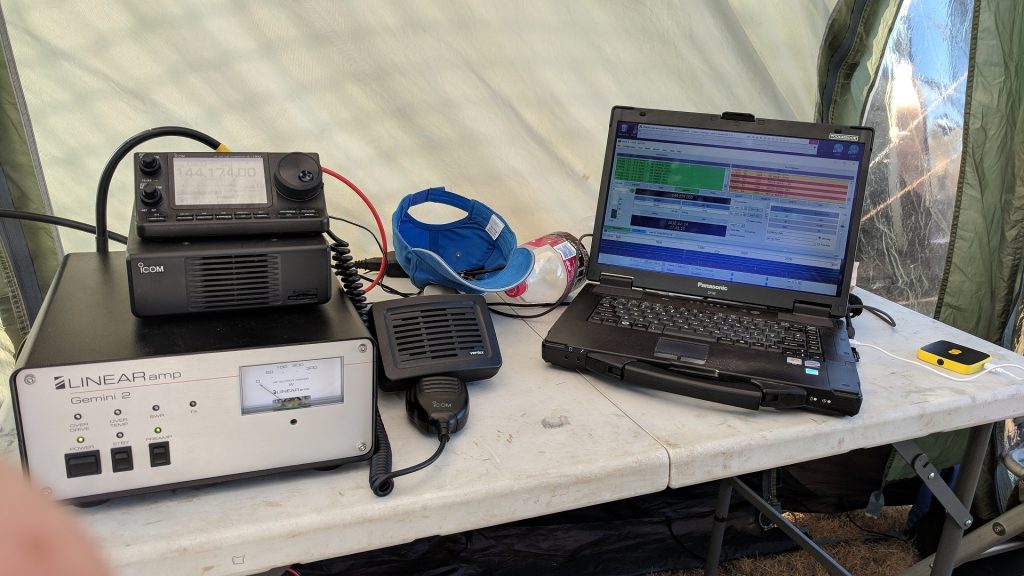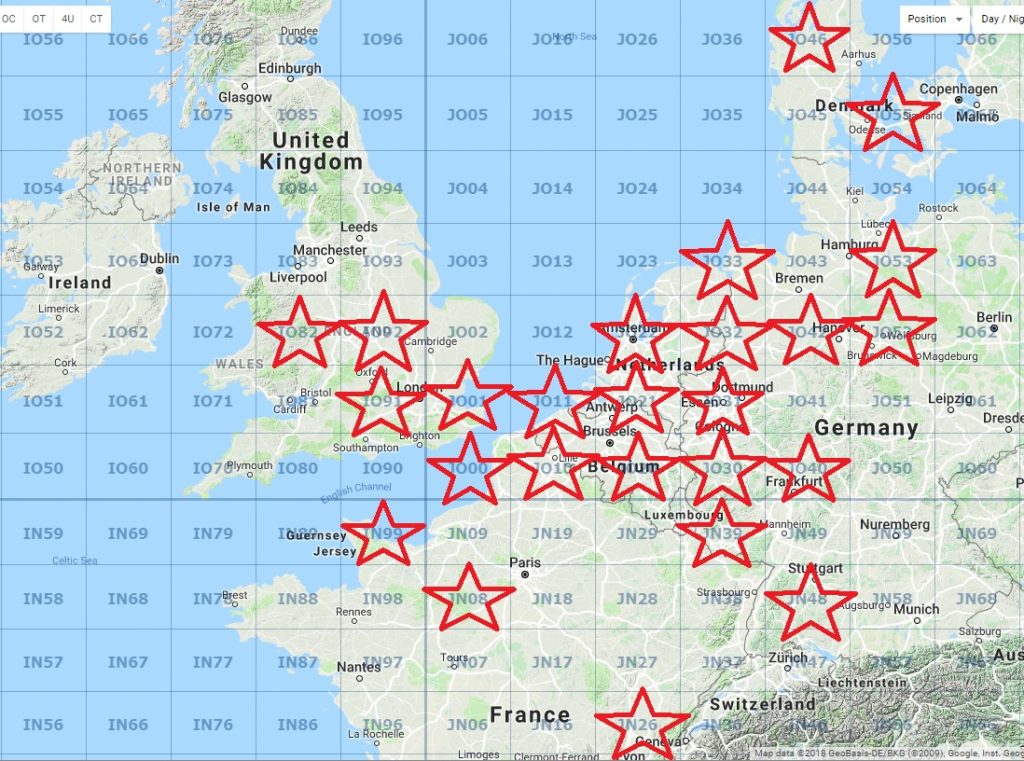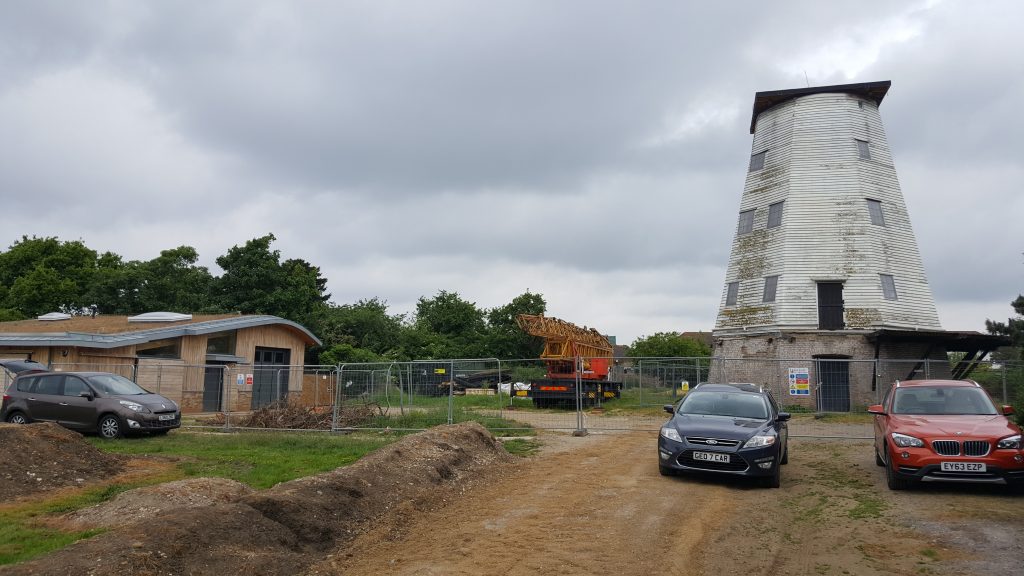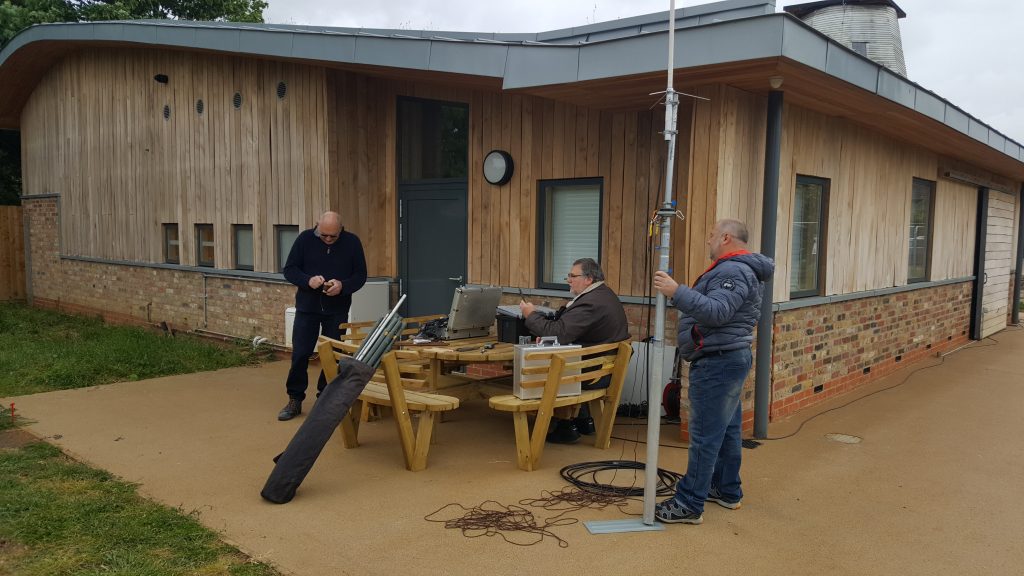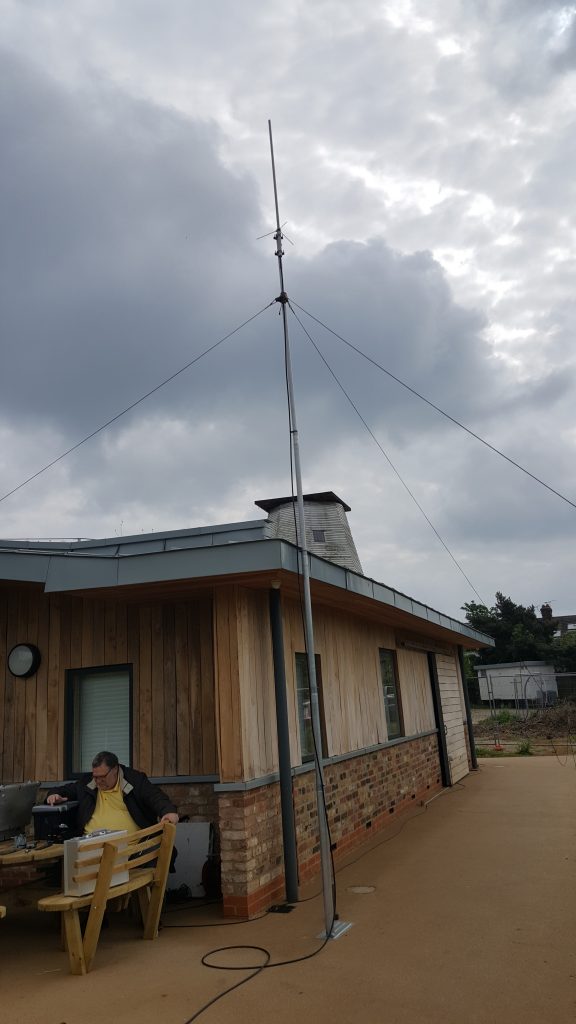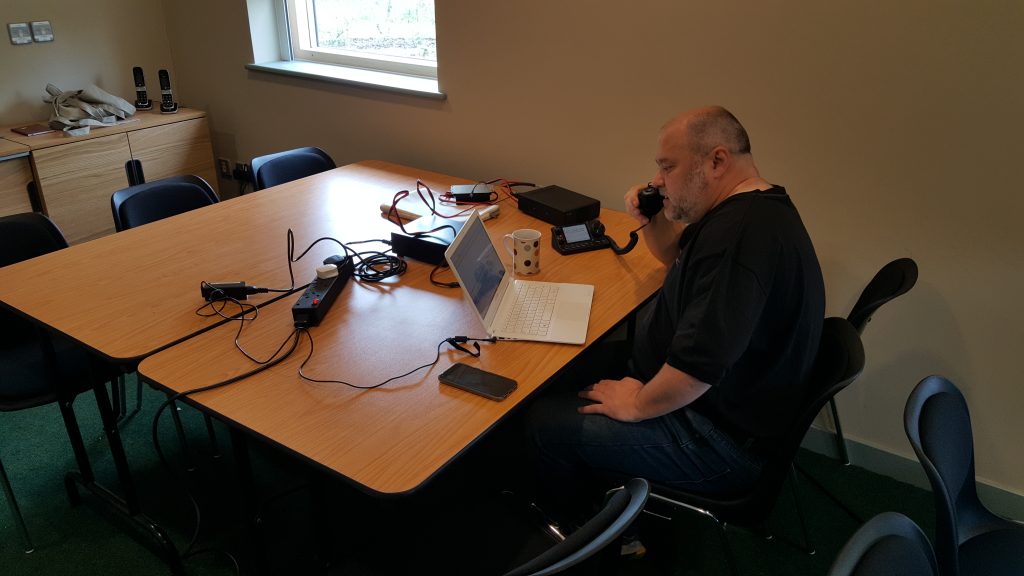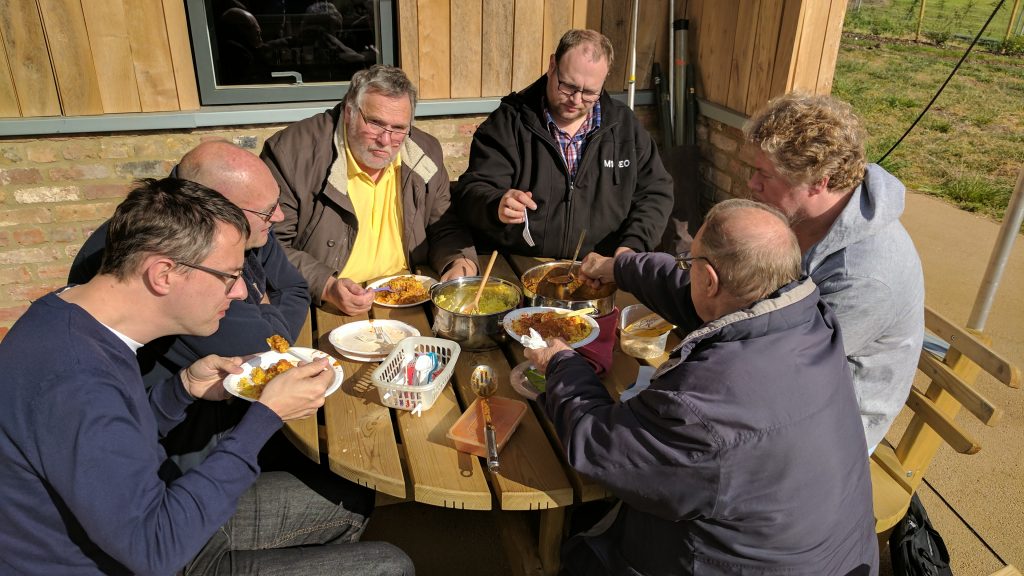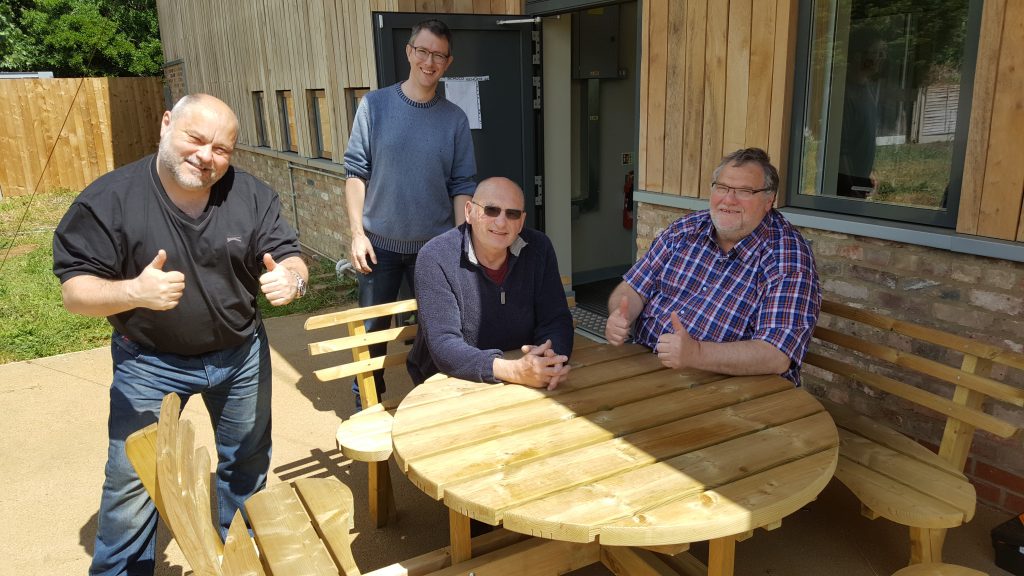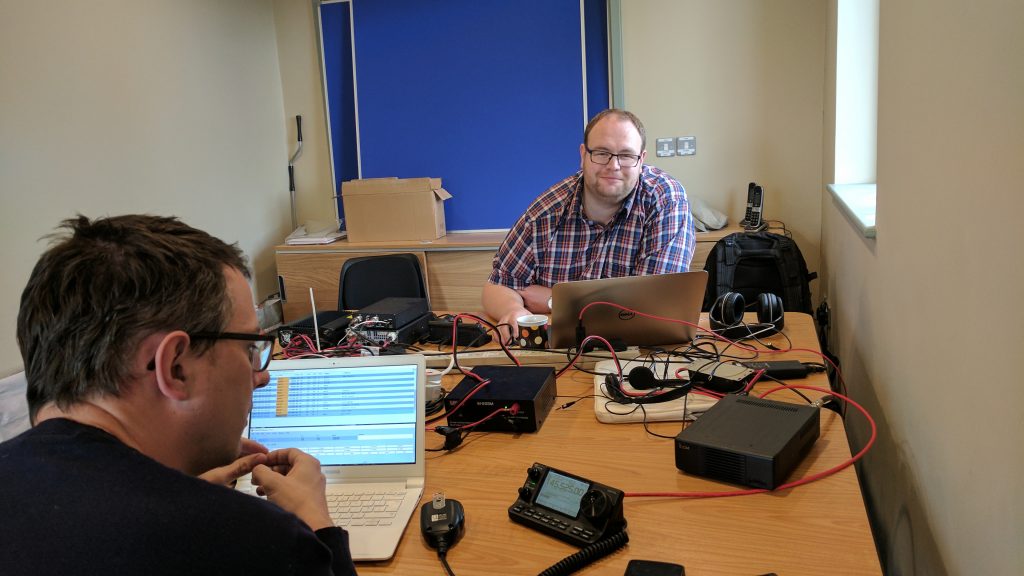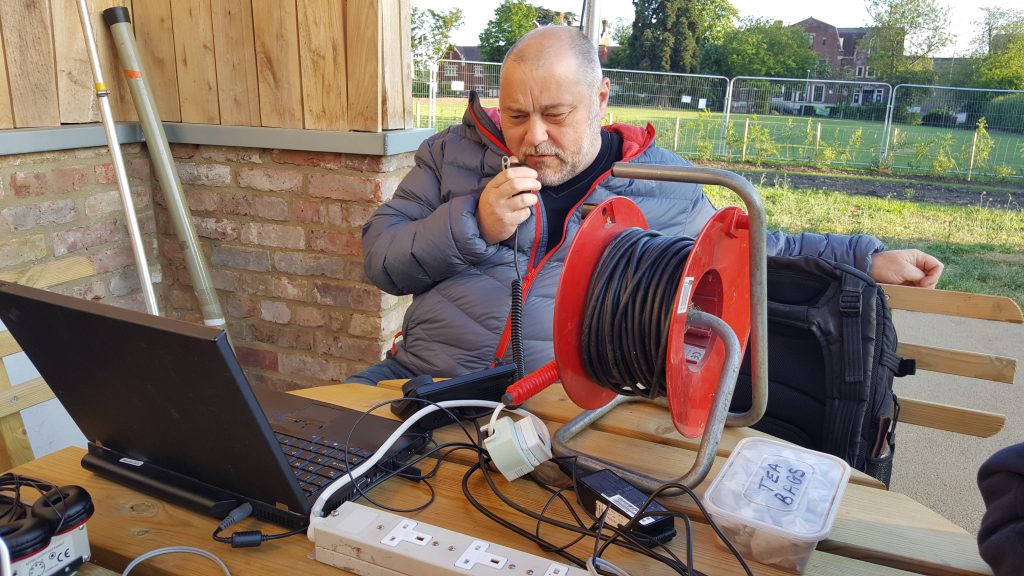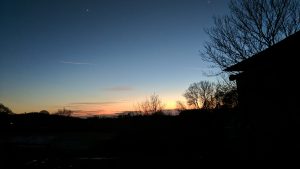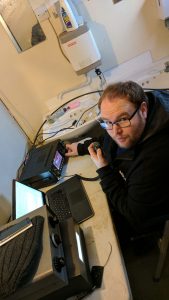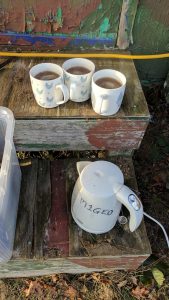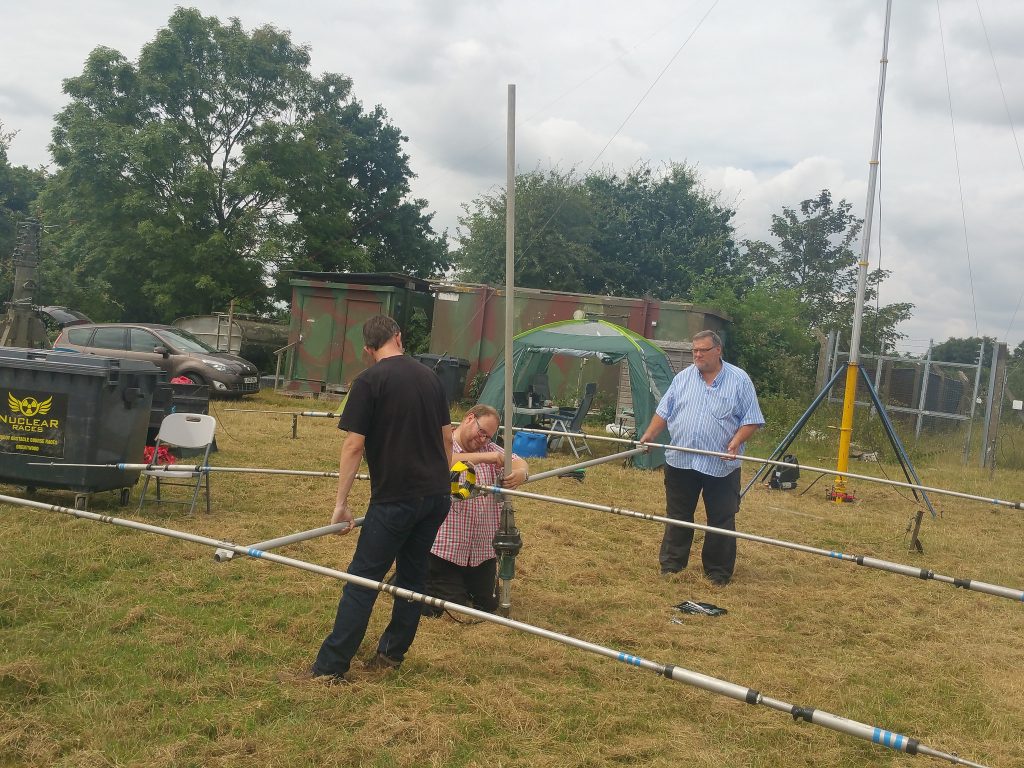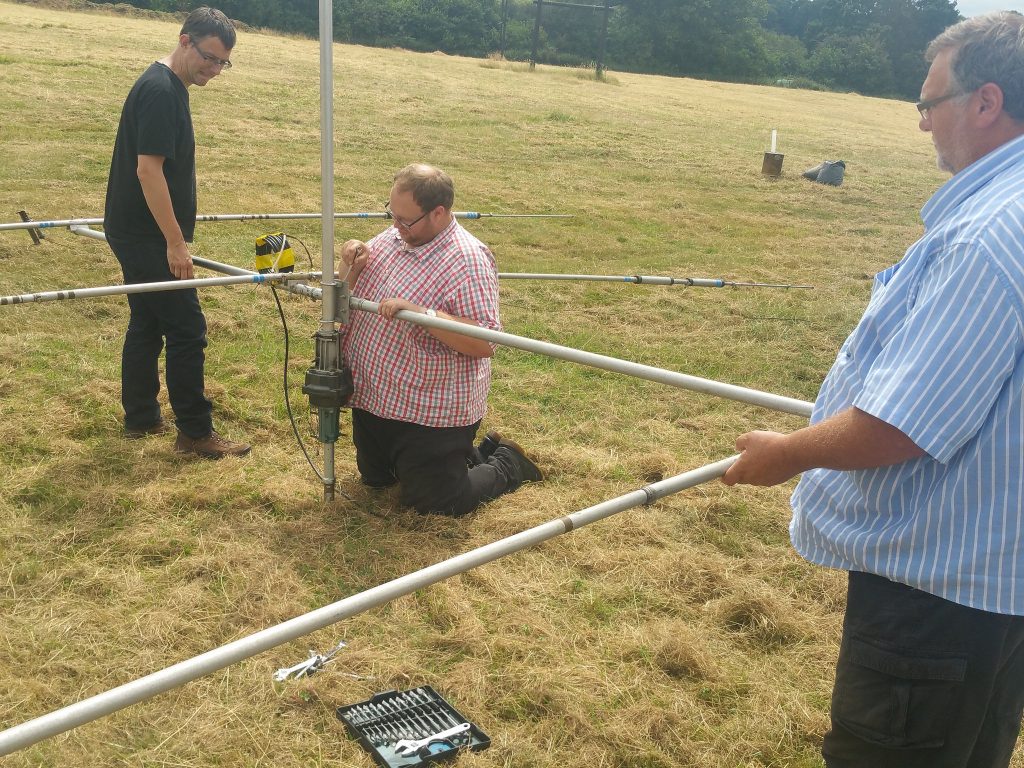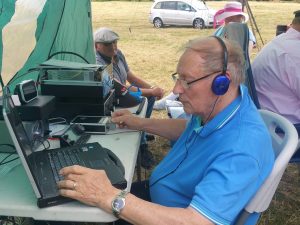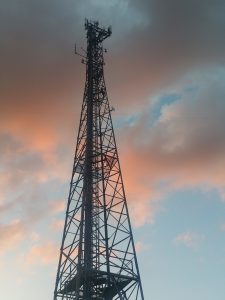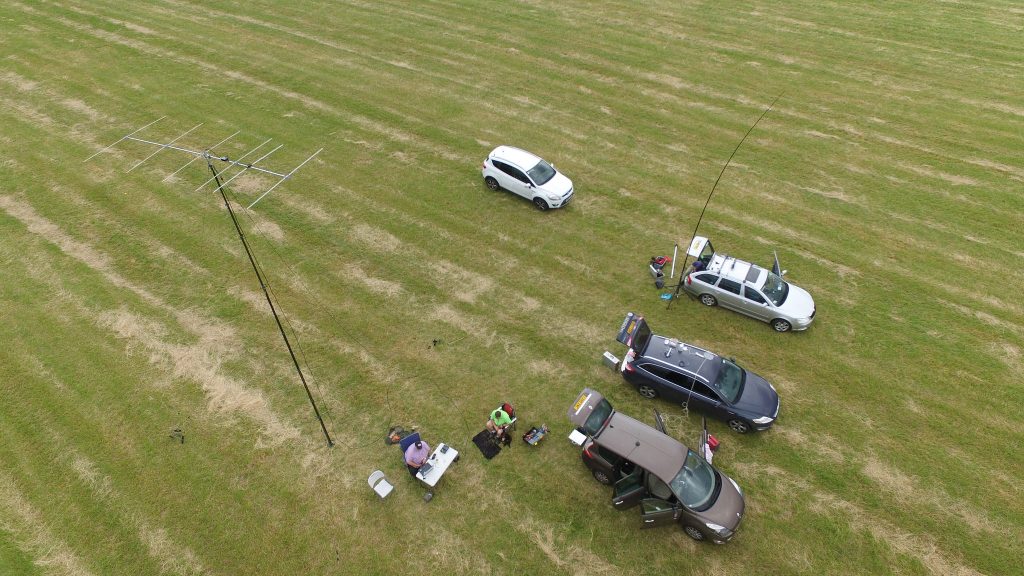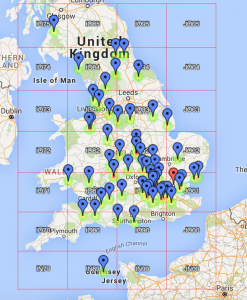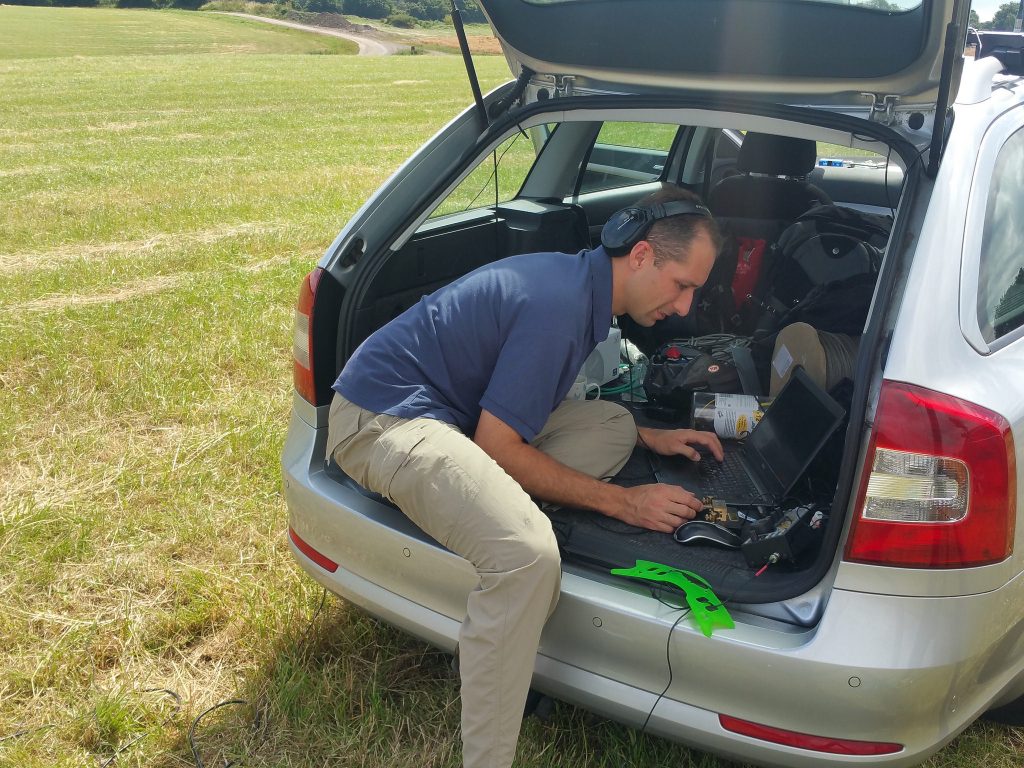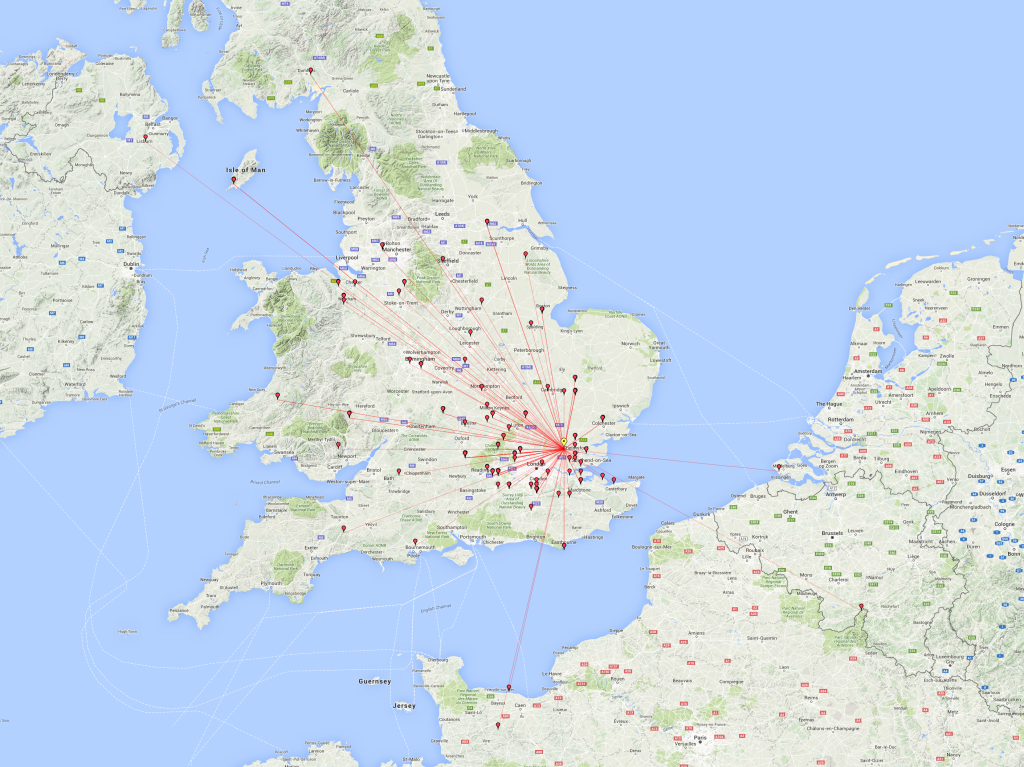Members of the SNBCG ventured out of Essex into Suffolk on the weekend of the 14-15 July 2018 to take part in a weekend of radio with Suffolk RED. The forecast was set fair with temperatures up to 30C, and with the offer to camp overnight on site.
George M1GEO, Chris G8OCV and Dave M0TAZ setup a VHF and HF station for some radio fun.
The VHF station comprised of a 9e LFA beam, LMR-400 coax and a DG8 masthead preamp. The Icom 7100 provided multimode support on 144 MHz, with the focus for the weekend on FT8. We managed to work 50 stations from 20 Maidenhead locators all over Europe, using a sold state 300w amplifier from Linear Amp UK.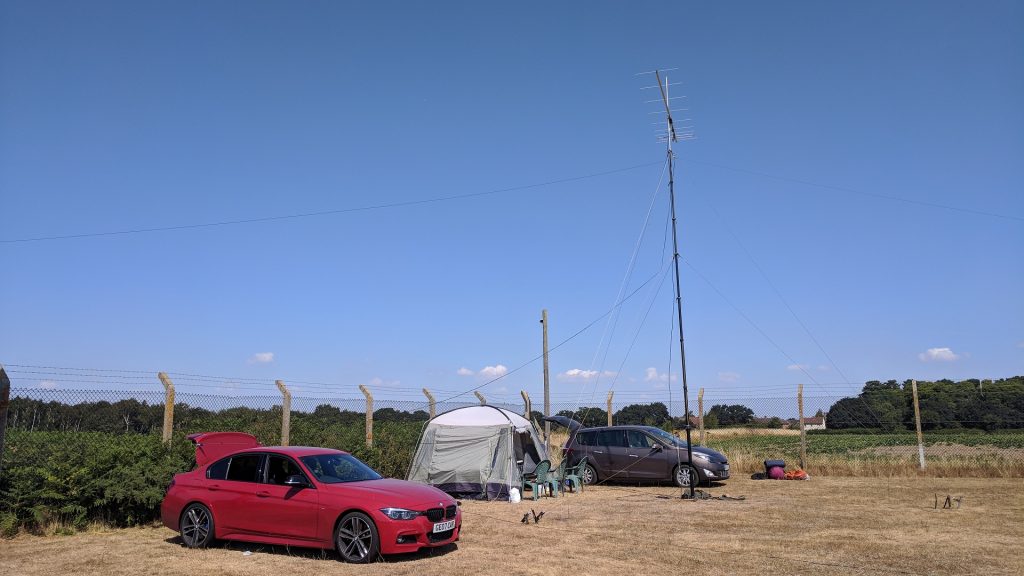
Power was provided by our 2kW Honda generator.
On Saturday we enjoyed an evening BBQ, and a chance to catch up with other members of the club.
Conditions on HF were not so good. Using an IC7610 and an Expert 1.3k-FA linear operating as M1GEO, only European contacts were made. We operated through the night.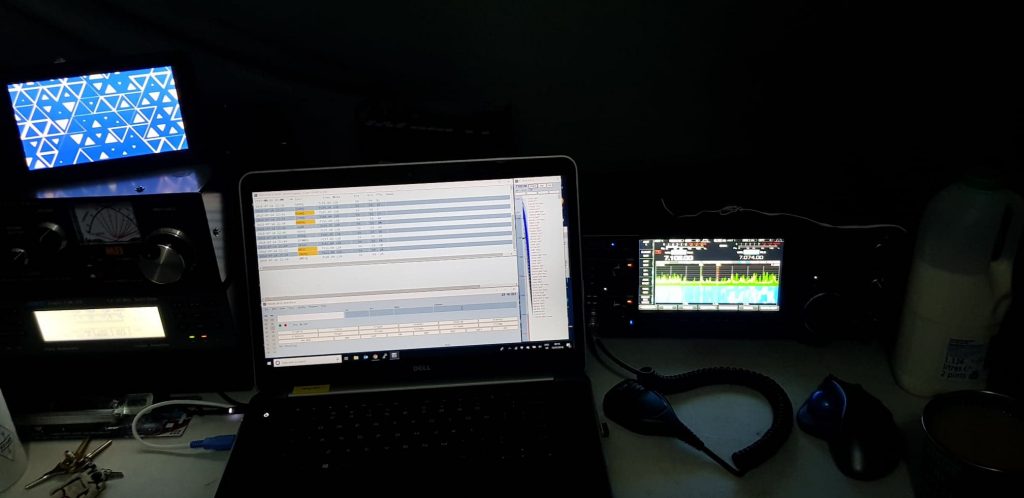 The 90 QSOs from the HF operation were loosely broken as follows:
The 90 QSOs from the HF operation were loosely broken as follows:
- SSB: 41 QSOs
- CW: 35 QSOs
- FT8: 14 QSOs
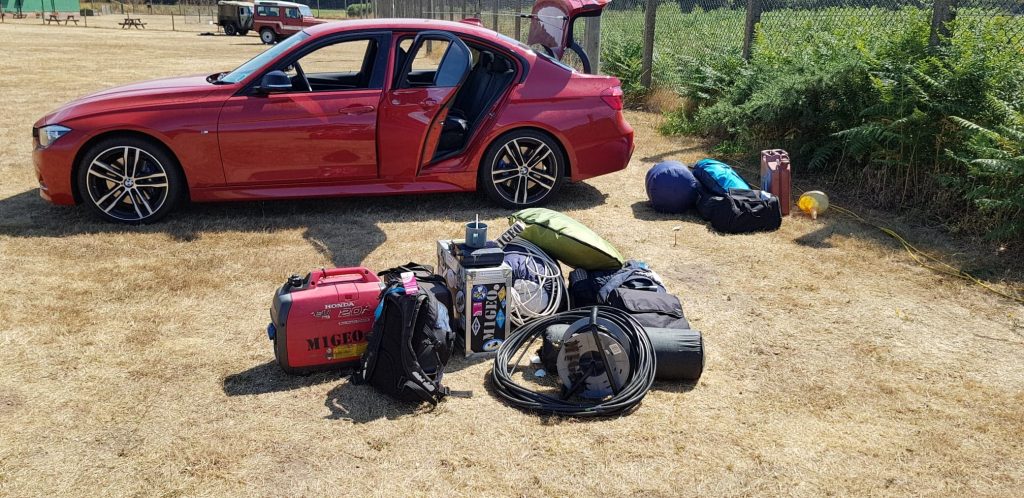 The packing down process took some time in the scorching heat. You can see the grass (or lack thereof) was also suffering.
The packing down process took some time in the scorching heat. You can see the grass (or lack thereof) was also suffering.
